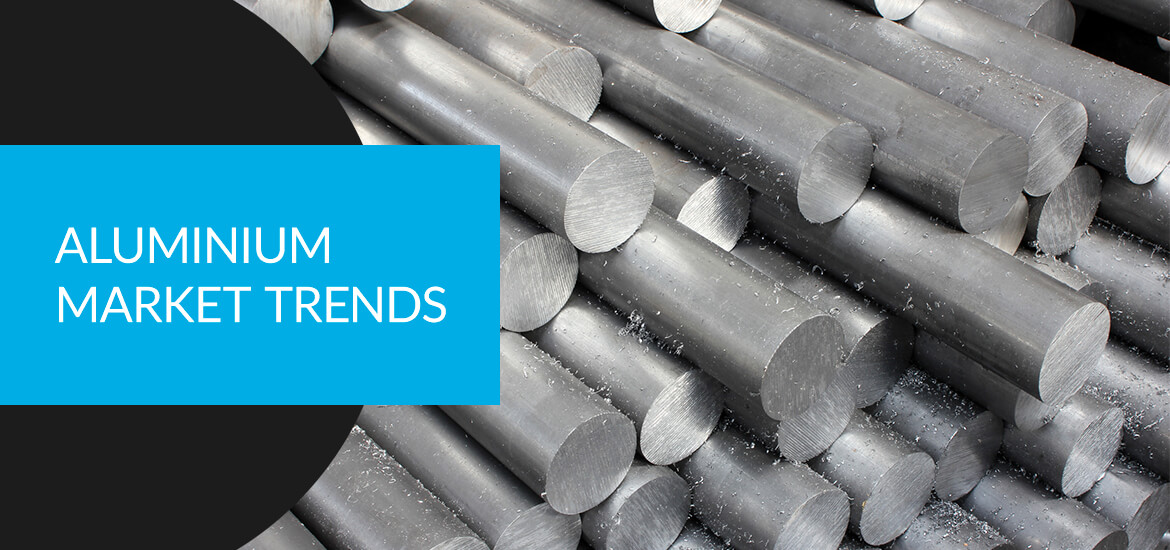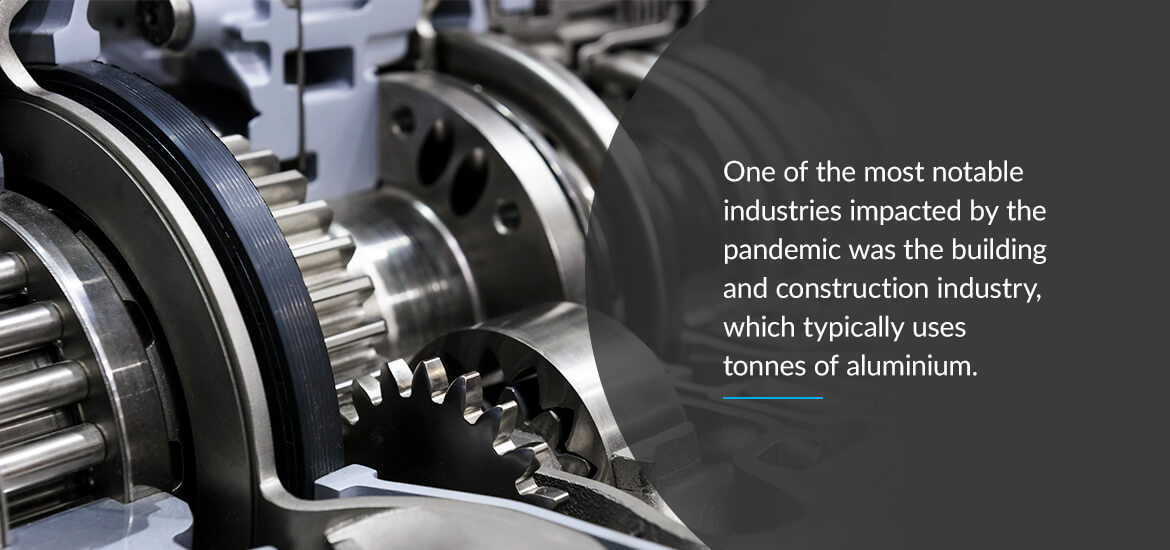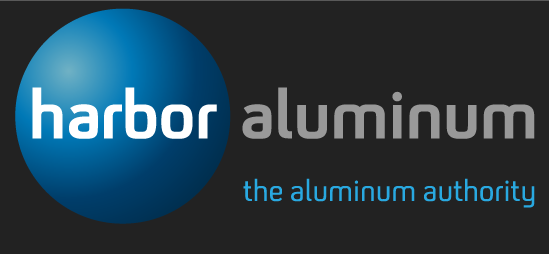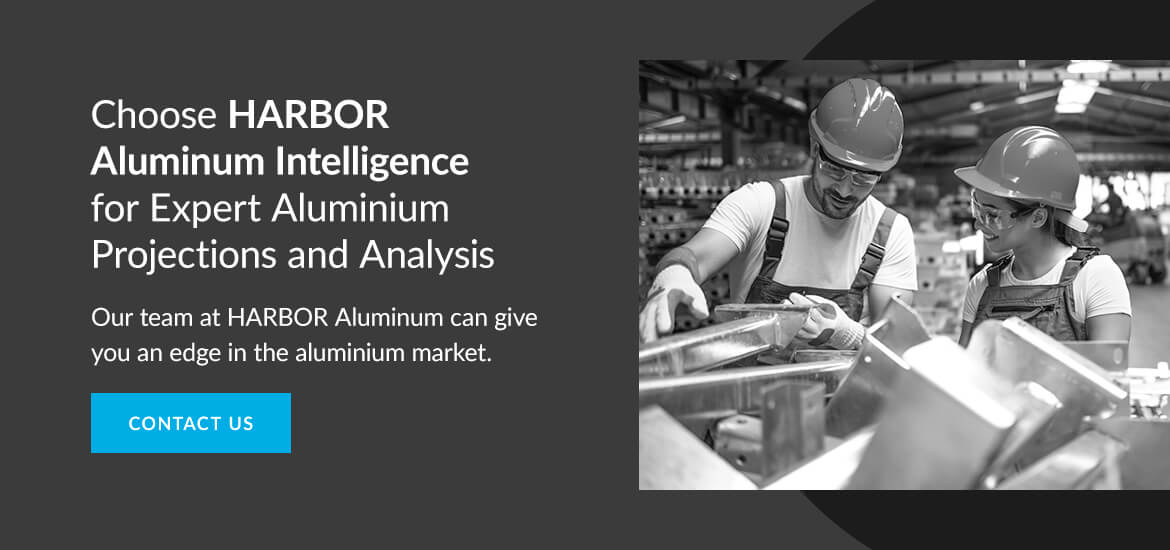Aluminum Market Trends

While aluminium trends are historically very steady, COVID-19 produced significant volatility in the aluminium market in 2020. While the metal started the year strong, with expectations for continued growth, the pandemic's spread caused a marked price downturn. Fortunately for aluminium suppliers, the price rebounded later in 2020, indicating aluminium demand and price will continue to grow in 2021.
Find out more about the aluminium trends in 2020 and the metal's outlook for 2021.
Aluminium Trends 2020
In early 2020, COVID-19 largely dictated aluminium prices. Essentially, aluminium trends took two distinct paths. At the beginning of the year, prices for aluminium on the London Metal Exchange were on a downward trend, losing value significantly as the pandemic raged. However, after the pandemic reached its peak, aluminium reversed course, raising in value throughout the year.
Due to China and the U.S.' Phase One trade deal, investor optimism about the metal caused it to hover around the $1,800-per-tonne mark in early January. Unfortunately, as the world reacted to a rapidly spreading pandemic, investor optimism waned, with the price dropping dramatically over the next few months. In May, the cost of aluminium went down to $1,474 per tonne — the lowest for the year.
After hitting this low point, aluminium prices began to rise steadily. As the world adjusted, the price of aluminium rose $80 a tonne per month starting in June, only excluding September. Due to a new wave of COVID-19 infections, the market took a slight hit. However, it bounced back in October, and the price of aluminium reached a high of $2,064 on Dec. 14.

Reasons for 2020 Aluminium Price Trends
The worldwide COVID-19 pandemic was the primary driver of aluminium's initial downward trajectory in 2020. One of the most notable industries impacted by the pandemic was the building and construction industry, which typically uses tonnes of aluminium. Due to lockdown regulations, loss of funds and labour shortages, this industry had to put many projects on hold, if not shut them down entirely. As a result, the need for construction materials made out of aluminium plummeted, leading to lower aluminium prices.
Similar to the loss of demand for construction materials, the automotive industry also required far less aluminium. As the pandemic affected production and reduced consumer purchasing of new cars, the automotive industry produced 15% fewer vehicles in 2020 than in 2019. After various sectors adjusted to the pandemic, the requirements for aluminium rose, with a few crucial factors contributing to upward aluminium price trends.
Learn more about some of the primary reasons aluminium rose in value in the second half of 2020.
Increased need from the building and construction industry
In the latter part of 2020, the demand for aluminium rose significantly as the building and construction industry began to bounce back. In particular, the Asia-Pacific region saw significant growth due to urbanization, a rising population and an increase in middle-class income, leading to a greater need for aluminium. Additionally, North America helped raise the demand for aluminium and increase its price, as the region saw rising investments and more construction projects.
Asia-Pacific regional market growth
For the foreseeable future, the fastest-growing market for aluminium will remain the Asia-Pacific region. This prediction played out in 2020, as aerospace, electronics and building and construction industries grew in countries like Japan, China and India. Due to this market growth in the second half of 2020, aluminium had more demand, driving up prices.
Energy transition
In 2020, countries and businesses worldwide continued to transition from fossil fuel to more environmentally friendly energy sources. Despite the pandemic, the global renewable energy capacity grew by 45%. Since companies needed aluminium to produce energy-efficient products, such as lightweight vehicles and solar panels, the material's value rose in response.
Aluminium Outlook for 2021
Aluminium's value and significance have shown no signs of declining in 2021. If you want to understand why experts expect aluminium's price to rise for the rest of this year, find out more about the primary factors affecting aluminium forecasts below.
Increased demand for primary and scrap aluminium
Due to the increased need for primary and scrap aluminium, many industry experts expect the metal's cost to rise. This increase in prices will likely come down to the high shipping costs for transporting the metal and low primary and scrap aluminium supply levels. Buyers in Europe and the United States are likely to bear the brunt of these higher prices, as they're the major importing regions.
Greater focus on green/low-carbon aluminium
Due to the amount of energy required to produce high-purity aluminium and an emerging market of buyers willing to pay a premium for greener aluminium, more companies will likely put a greater focus on low-carbon and green aluminium. Since aluminium suppliers will need to invest in green technologies and machinery as they shift away from fossil fuels, aluminium's price should rise to account for the higher costs.
Growing preference for aluminium cans
Due to many companies' attempts to move away from plastic, companies and consumers have started showing a growing preference for aluminium cans. As a result, aluminium is emerging as a major competitor to glass and plastic in the beverage packaging sector. Experts forecast the need for aluminium cans to continue through 2021, with the demand for aluminium rising correspondingly.
More automotive industry demand
Since companies in the automotive industry rely on aluminium in the structural parts and batteries of electric vehicles, the need for this metal will probably stay high. Electric vehicles are becoming more widespread, with many major automotive manufacturers choosing to expand their electric offerings to meet consumer demands and become more eco-friendly. As a result, aluminium suppliers are likely to continue to see more demand from this industry, causing suppliers to raise their prices.
Stricter environmental regulations
Through the rest of 2021 and for the foreseeable future, stricter environmental regulations may impact aluminium production. For example, China will likely see a slowing aluminium production growth due to the government's push for stricter environmental regulations, causing less energy-efficient production methods to become unsustainable. Though production will experience slower growth, it doesn't look like it will turn into a decline. Experts expect major markets' global aluminium consumption to increase over the next few years, with 2021 no exception.
Choose HARBOR Aluminum Intelligence for Expert Aluminium Projections and Analysis
At HARBOR Aluminum, we're ready to provide you with expert aluminium industry analysis. Since we're solely focused on aluminium forecasting and pricing, we set ourselves apart from competitors who also analyze other metals. Due to our in-depth aluminium market research and specialization, we can deliver accurate and detailed aluminium industry intelligence and data to your company to help you better navigate the industry. With our aluminium prices and premiums service, you can stay fully updated on the latest aluminium premiums and pricing data and trends.
As the world’s leading aluminium authority, our team at HARBOR Aluminum can give you an edge in the aluminium market. Take a moment to review our subscription options to find out more about how we can help you.

